- Home
- Paul Doherty
Dark Serpent (Hugh Corbett 18)
Dark Serpent (Hugh Corbett 18) Read online
Copyright © 2016 Paul Doherty
The right of Paul Doherty to be identified as the Author of the Work has been asserted by him in accordance with the Copyright, Designs and Patents Act 1988.
Apart from any use permitted under UK copyright law, this publication may only be reproduced, stored, or transmitted, in any form, or by any means, with prior permission in writing of the publishers or, in the case of reprographic production, in accordance with the terms of licences issued by the Copyright Licensing Agency.
First published as an Ebook by Headline Publishing Group in 2016
All characters in this publication are fictitious and any resemblance to real persons, living or dead, is purely coincidental.
Cataloguing in Publication Data is available from the British Library
Cover by craigfraserdesign.com
eISBN: 978 1 4722 3368 4
HEADLINE PUBLISHING GROUP
An Hachette UK Company
Carmelite House
50 Victoria Embankment
London EC4Y 0DZ
www.headline.co.uk
www.hachette.co.uk
Contents
Title Page
Copyright Page
About the Author
Also by Paul Doherty
Praise
About the Book
Character List
Historical Note
Part One
Part Two
Part Three
Part Four
Part Five
Part Six
Part Seven
Part Eight
Part Nine
Author’s Note
About the Author
© David Headley
Paul Doherty was born in Middlesbrough. He studied History at Liverpool and Oxford Universities and obtained a doctorate for his thesis on Edward II and Queen Isabella. He is now headmaster of a school in north-east London and lives with his family in Essex.
By Paul Doherty
Novels
Dark Serpent
The Peacock’s Cry (digital novella)
Roseblood
The Death of a King
Prince Drakulya
The Lord Count Drakulya
The Fate of Princes
Dove Amongst the Hawks
The Masked Man
The Rose Demon
The Haunting
The Soul Slayer
The Plague Laws
The Love Knot
Of Love and War
The Loving Cup
The Last of Days
Non-fiction
The Mysterious Death of Tutankhamun
Isabella and the Strange Death of Edward II
Alexander the Great, The Death of a God
The Great Crown Jewels Robbery of 1303
The Secret Life of Elizabeth I
The Death of the Red King
Series
Hugh Corbett Medieval Mysteries
Sorrowful Mysteries of Brother Athelstan
Sir Roger Shallot Tudor Mysteries
Kathryn Swinbrooke Series
Nicholas Segalla Series
The Templar Mysteries
Matthew Jankyn Series
Alexander the Great Mysteries
Canterbury Tales of Murder and Mystery
The Egyptian Mysteries
Mahu (The Akhenaten-Trilogy)
Mathilde of Westminster Series
Political Intrigue in Ancient Rome Series
Praise
Praise for Paul Doherty’s historical novels:
‘Teams with colour, energy and spills’ Time Out
‘Deliciously suspenseful, gorgeously written and atmospheric’ Historical Novels Review
‘Supremely evocative, scrupulously researched’ Publishers Weekly
‘An opulent banquet to satisfy the most murderous appetite’ Northern Echo
‘Extensive and penetrating research coupled with a strong plot and bold characterisation. Loads of adventure and a dazzling evocation of the past’ Herald Sun, Melbourne
About the Book
Sir Hugh Corbett returns in the eighteenth novel in master historian Paul Doherty’s brilliant series.
Summer 1311, and Sir Hugh Corbett has taken up a life of danger again …
After his recent unveiling of a devious assassin, Sir Hugh Corbett has returned to service as the Keeper of the Secret Seal, begrudgingly admitting that his appetite for adventure has once again been whetted.
Summoned to meet the King to be congratulated on their work together, Corbett and Ranulf learn of the death of Corbett’s close friend, Ralph Grandison. Ralph, a leper, has been found dead in a rowing boat, a dagger thrust through his chest. But this murder is not the first of its kind. Other patients of the hospital in which Ralph was staying have similarly slaughtered and it seems as though the lepers, all former knights of the Royal household, are being targeted.
The discovery that Ralph was killed by no ordinary weapon, but a poison dagger that once belonged with the Crown Jewels before being famously stolen, leads Corbett down a complex path, where the risk of disease plays out against the backdrop of finding an assassin who will use any means necessary to kill. As Corbett puts himself in the path of extreme danger, will he survive to see another day?
CHARACTER LIST
John Naseby Master of The Candle-Bright
Laurence Torpel Leading mariner
Peterkin Ship’s boy
Gaston Foix Master of The Black Hogge
Ysabeau Gaston’s wife
Blanquit Leading seaman aboard The Black Hogge
Sulpice Sailor aboard The Black Hogge
Matthew Fallowfield Matthew Aschroft, Templar knightw
Henry Sumerscale Henry Poultney, Templar knight
Sir Hugh Corbett The Keeper of the Secret Seal
Lady Maeve Sir Hugh’s wife
Edward Sir Hugh’s son
Eleanor Sir Hugh’s daughter
Boudon Sir Hugh’s steward
Ranulf-atte-Newgate Senior clerk in the Chancery of the Green Wax
Chanson Sir Hugh’s clerk of the stables
Walter Creswell ‘The Deacon’; one of Sir Hugh’s spies in France
Fitzosbert Chief muniment clerk at the Tower
Robert Burnel Bishop of Bath and Wells
Gabriel Rougehead King’s approver
Crispin Slingsby Owner of the Salamander tavern
Philippa Henman Owner of the Merry Mercy tavern
Raoul Henman Vintner and alderman of Queenhithe
Matthias Sokelar Harbour master
Agnes Sokelar Matthias’s daughter
Geoffrey Layburn Vicar of Holy Trinity the Little
Waldo Henman Previous vicar of Holy Trinity; Raoul Henman’s uncle
Primus Leader of assassin band
Edward II King of England
Peter Gaveston Earl of Cornwall, the king’s favourite
Philip IV King of France
Isabella Daughter of Philip IV, wife of Edward II
Guillaume de Nogaret Philip’s chief minister
Thomas, Earl of Lancaster Leader of the great lords
Aymer de Valence Earl of Pembroke, opponent of Edward II
Sir John Howard Knight
Ap Ythel Leader of Edward’s bodyguard
Chancellor Baldock King’s councillor
Walter Reynolds Royal chaplain and king’s councillor
Pierre du Bois Lawyer to Philip IV
Amaury de Craon French envoy
Guido Tallefert English agent in France
Lord Scrope English envoy in France
Rochfort Former Templar
Pietal English courier in Boulogne
> Brother Jerome Clerk to Amaury de Craon
Jacques de Molay Grand master of the Templar order
William Boveney Templar serjeant
Ralph Grandison Templar knight
Reginald Ausel Master of St Giles lazar hospital
Edmund Datchet Templar knight
Master Crowthorne Leech at St Giles lazar hospital
Walter Burghesh Templar captain
Roger Stapleton Templar knight
Sir Peter Mausley Leper knight
Richard Puddlicot Master felon
John of St Albans Mason
Elijah Woodman Magister Viae, leader of the Fraternity of the Hanged
Matilda Poultney Owner of the Sunne in Splendour tavern
John Poultney Son of Matilda Poultney
Penda At the Sunne in Splendour
Gunhilda Penda’s sister, at the Sunne in Splendour
HISTORICAL NOTE
‘Uneasy lies the head that wears the Crown.’ Shakespeare’s description of English kingship certainly applied to Edward II of England as he fought to protect the great love of his life, Peter Gaveston, during the summer of 1311. Sinister dark forces ranged against both the King and his royal favourite. Across the Narrow Seas, Philip IV of France wove his own tapestry of treason to trap Edward and Gaveston as well as their principal clerk Sir Hugh Corbett. The French king’s secret poisonous design had been well planned and cunningly plotted, and was on the verge of full flowering …
PART ONE
‘What use is it to oppose the king?’
The Monk of Malmesbury, Life of Edward II
‘From all the terrors of the deep, Lord, deliver us. From those who prowl the seas, wolves seeking those whom they may devour, Lord, deliver us.’ John Naseby, master of the two-hundred-tun cog The Candle-Bright, quietly murmured his prayer. The journey out of the Thames to Boulogne-sur-Mer in the English-held enclave of Ponthieu in Normandy was short but highly dangerous.
‘You are praying, Master Naseby?’
‘I certainly am,’ the master replied, glancing out of the corner of his eye at Laurence Torpel, his leading mariner. ‘I am praying for swift and smooth passage. You there!’ Naseby steadied himself against the pitch and swell of the sea. ‘You there!’ he repeated, bellowing at the ship’s boy high on the falcon perch at the top of The Candle-Bright’s soaring mast. ‘What do you see, Peterkin?’
‘Nothing, sir,’ the boy’s voice carried back. ‘Nothing to the north, south, east or west.’
Naseby heaved a sigh of relief and carefully made his way across to the taffrail, gesturing at Torpel to join him. Both seamen stood grasping the rough-hewn wood, feet apart as they braced themselves against the fast-running swell of the Narrow Seas. Naseby glanced across at the great sail billowing out under a vigorous north-easterly wind. A good wind, indeed the best for the crossing they had to make. His heart skipped a beat as he glimpsed a shadow against the sail like that of a man hanging from the great crossbar of the mast, yet it was only a loose rope. He glanced away, staring out over the swollen grey sea broken by ripples of frothy white, his heart and mind thronging with the names of those he had killed at sea, above all those of Matthew Fallowfield and Henry Sumerscale. He glanced over his shoulder at that dangling rope. He had hanged Fallowfield and Sumerscale from the mast of The Candle-Bright three years ago. He murmured another prayer.
‘Master, you still think of them?’
‘Of course I do. How can I forget?’ Naseby leaned against the side of the ship, his eyes watering as his face was whipped by the salt-edged wind. ‘Three years ago last January, The Candle-Bright was part of the royal fleet mustering to leave London and Dover to accompany our noble King Edward across to Notre-Dame de Boulogne; he was to marry Isabella, the twelve-year-old daughter of Philip IV of France, God curse the Frenchman as a sinner and a reprobate.’ Naseby was now talking to himself as he recalled the events of that fateful time. ‘Yes, January 1308,’ he murmured. ‘The old king had been dead for six months, his wounded cadaver opened, embalmed and sent to Westminster for burial; his beloved son Edward of Caernarvon had succeeded to the throne. Now the young king did not want to marry Isabella. Philip threatened all-out war against Gascony, and the seizure of all England’s possessions in France. Edward conceded, as he did over the question of the Templars. Do you remember, Torpel?’
‘Of course. Philip of France had declared the Templars to be warlocks and magicians, corrupt, degenerate and guilty of the most appalling practices.’
‘All lies, Master Torpel. Philip just wanted the Templar treasures, their lands and whatever else he could grab. He bullied Pope Clement V for his blessing and approval and,’ Naseby sighed, ‘as Clement lives in exile in Avignon, he falls within easy reach of Philip’s mailed fist. Templars in France and elsewhere were seized and disappeared into Philip’s dungeons, where his torturers soon got the answers their master required. At first, however, Edward II of England refused to believe Philip’s allegations against the order.’
Naseby drew a deep breath of fresh sea air. He had told this tale to himself as well as to those whom he trusted, time and again. He had to set the scene for what he knew to be the most tragic mistake of his life.
‘Gaveston.’ Torpel broke into his thoughts.
‘Gaveston,’ Naseby agreed. ‘He is the cause of everything. King Edward is obsessed with him.’
‘Are they lovers?’ Torpel asked, lowering his voice.
Naseby glanced down at the sea-washed deck, wondering how much he should say.
‘That’s why we are now crossing to Boulogne, isn’t it?’ Torpel insisted. ‘Peter Gaveston, the Gascon favourite, the beloved friend of our noble king, who has created him Earl of Cornwall and married him off to a royal princess.’ He lowered his voice, as if the very wind could carry his words to where he wished they would not. ‘They say the great earls want Gaveston exiled. They will force the king to agree, and my lord of Gaveston will have to shelter in Ponthieu, probably in Boulogne itself.’ He pointed down at the deck. ‘We are taking treasure and whatever else he will need to live in opulent exile.’
‘The king has agreed to this; he has commissioned us even against the advice of Sir Hugh Corbett, Keeper of the Secret Seal.’
‘Because of The Black Hogge?’ Torpel queried.
Naseby ignored the question. He stared out over the grey water, the morning mist thinning fast.
‘Are you awake, boy?’ he yelled up at the lookout in the falcon’s perch.
‘Awake and watching!’ the boy sang back.
Torpel decided to change the subject. ‘Master, you were talking about Fallowfield and Sumerscale. I admit I have heard rumours, gossip. I would like to hear the true story, as I did not serve with you then.’
Naseby nodded. ‘According to Gabriel Rougehead, a king’s approver, a Judas man, Fallowfield and Sumerscale, both members of my crew, became drunk in a tavern, the Salamander, which stands close to the river in Queenhithe. They mocked the king and Gaveston, mimicking them in the sex act, and,’ Naseby sighed, ‘made matters worse with lecherous comments about Edward’s intended wife and new queen. I was ordered to try both men before a hastily convened ship’s tribunal at Queenhithe. I was given the power of oyer and terminer.’
‘To hear and to terminate,’ Torpel translated.
‘And I certainly did,’ Naseby agreed. ‘At the time, The Candle-Bright was a royal ship in the king’s service, so they were tried in secret according to the articles of war at sea. Rougehead repeated his allegation, which was supported by three other witnesses. No one from the Salamander came forward to vouch for Sumerscale and Fallowfield’s innocence. Both men denied the charge, but they couldn’t even explain why they were in that tavern in the first place. Anyway, the Judas men had their day.’
‘And were Sumerscale and Fallowfield guilty?’
‘I doubt it very much. Perhaps slurred comments when they were deep in their cups, but Rougehead and his fellow approvers could not be contradicted. You see
, the king had issued a proclamation against anyone attacking Gaveston in word or deed. This same royal proclamation offered rewards to those who laid indictment against offenders and were proved correct. I …’
Naseby paused as he steadied himself against the roll of the ship, followed by a sharp juddering as it swerved sideways. The sail was now slapping loudly like the snap of a whip. He waited whilst Torpel screamed at the crew to tack according to the shift of the vessel. The sound of bare feet on the slop-soaked deck echoed like a drum; above them a marauding gull shrieked and swooped. Naseby stared across the sullen waters. He did not really know why he was telling Torpel all this, but he had confessed the same to Hugh Corbett, Keeper of the Secret Seal in the Jerusalem Chamber at Westminster, a room Corbett used to transact the secret business of the Crown. He recalled the clerk’s long oval face with its deep-set, soulful eyes, his shaven olive skin and close-cropped hair. Corbett reminded Naseby of a cleric rather than a royal clerk. An official lacking any ornament except for the signet ring of the Secret Chancery on his left hand and a pure silver cross on a filigree chain around his neck. A wedding gift, so someone had told him, from Corbett’s wife the Lady Maeve …
Torpel returned to his side, and Naseby continued with his narrative.
‘Against my better judgement, I found Fallowfield and Sumerscale guilty. Like so many others, I was eager to please the young king. I was ordered to execute them immediately.’ He looked askance at his leading mariner. ‘I really had no choice. The Candle-Bright was governed by the articles of war; we were on royal business. In the end, the will of the prince has force of law. I mustered the ship’s company and hanged both men from the mast. I was also ordered to keep the bodies dangling there until we set sail, as a public warning not to engage in contumacious or treasonable talk against His Grace and the king’s good friend and brother Lord Peter Gaveston.’

 Book of Shadows
Book of Shadows The Merchant of Death
The Merchant of Death Dark Queen Waiting
Dark Queen Waiting Devil's Wolf
Devil's Wolf The Lord Count Drakulya
The Lord Count Drakulya A Shrine of Murders
A Shrine of Murders The Eye of God
The Eye of God A Maze of Murders
A Maze of Murders The Hangman's Hymn
The Hangman's Hymn The Godless
The Godless Death's Dark Valley
Death's Dark Valley Queen of the Night ar-4
Queen of the Night ar-4 Ghostly Murders
Ghostly Murders Saintly Murders
Saintly Murders The Field of Blood
The Field of Blood Hugh Corbett 10 - The Devil's Hunt
Hugh Corbett 10 - The Devil's Hunt Assassin in the Greenwood hc-7
Assassin in the Greenwood hc-7 The Song of the Gladiator
The Song of the Gladiator Hugh Corbett 17 - The Mysterium
Hugh Corbett 17 - The Mysterium The Mask of Ra
The Mask of Ra An Evil Spirit Out of the West (Ancient Egyptian Mysteries)
An Evil Spirit Out of the West (Ancient Egyptian Mysteries) Herald of Hell
Herald of Hell Mathild 03 - The Darkening Glass
Mathild 03 - The Darkening Glass Dark Serpent (Hugh Corbett 18)
Dark Serpent (Hugh Corbett 18)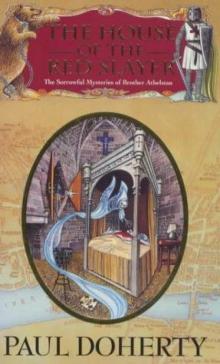 House of the Red Slayer smoba-2
House of the Red Slayer smoba-2 The Gallows Murders
The Gallows Murders The Straw Men
The Straw Men The Great Revolt
The Great Revolt The Rose Demon
The Rose Demon By Murder's bright light smoba-5
By Murder's bright light smoba-5 Templar
Templar Murder Most Holy
Murder Most Holy The House of Shadows
The House of Shadows A Brood of Vipers srs-4
A Brood of Vipers srs-4 Song of a Dark Angel hc-8
Song of a Dark Angel hc-8 Satan in St Mary hc-1
Satan in St Mary hc-1 Mathilde 01 - The Cup of Ghosts
Mathilde 01 - The Cup of Ghosts The Anger of God smoba-4
The Anger of God smoba-4 Isabella and the Strange Death of Edward II
Isabella and the Strange Death of Edward II The Midnight Man ctomam-7
The Midnight Man ctomam-7 The Assassin's Riddle
The Assassin's Riddle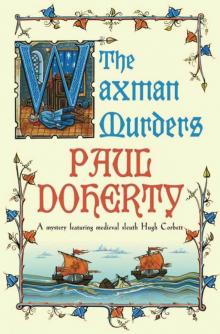 Hugh Corbett 15 - The Waxman Murders
Hugh Corbett 15 - The Waxman Murders Bloodstone smoba-11
Bloodstone smoba-11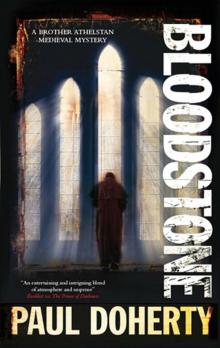 Bloodstone
Bloodstone The Gallows Murders srs-5
The Gallows Murders srs-5 The Midnight Man
The Midnight Man A Brood of Vipers
A Brood of Vipers The Templar Magician
The Templar Magician Hugh Corbett 11 - The Demon Archer
Hugh Corbett 11 - The Demon Archer Hugh Corbett 14 - The Magician's Death
Hugh Corbett 14 - The Magician's Death Candle Flame
Candle Flame The Nightingale Gallery smoba-1
The Nightingale Gallery smoba-1 The Anger of God
The Anger of God The Book of Fires
The Book of Fires Prince of Darkness hc-5
Prince of Darkness hc-5 The House of Crows smoba-6
The House of Crows smoba-6 The Grail Murders
The Grail Murders By Murder's Bright Light
By Murder's Bright Light House of the Red Slayer
House of the Red Slayer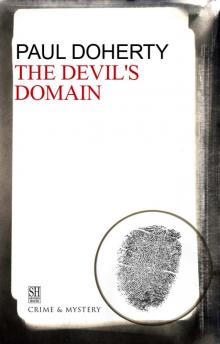 The Devil's Domain
The Devil's Domain The Relic Murders srs-6
The Relic Murders srs-6 A haunt of murder ctomam-6
A haunt of murder ctomam-6 The Straw Men smoba-12
The Straw Men smoba-12 Hugh Corbett 06 - Murder Wears a Cowl
Hugh Corbett 06 - Murder Wears a Cowl An Ancient Evil (Canterbury Tales Mysteries)
An Ancient Evil (Canterbury Tales Mysteries) The Grail Murders srs-3
The Grail Murders srs-3 The Fate of Princes
The Fate of Princes The poisoned chalice srs-2
The poisoned chalice srs-2 Hugh Corbett 12 - The Treason of the Ghosts
Hugh Corbett 12 - The Treason of the Ghosts Hugh Corbett 13 - Corpse Candle
Hugh Corbett 13 - Corpse Candle The Season of the Hyaena (Ancient Egyptian Mysteries)
The Season of the Hyaena (Ancient Egyptian Mysteries) The White Rose murders srs-1
The White Rose murders srs-1 The Devil's domain smoba-8
The Devil's domain smoba-8 A Pilgrimage to Murder
A Pilgrimage to Murder Roseblood
Roseblood The Relic Murders
The Relic Murders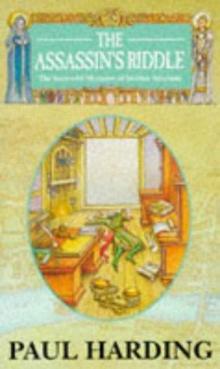 The Assassin's riddle smoba-7
The Assassin's riddle smoba-7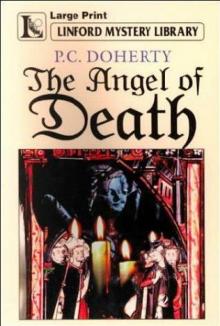 Angel of Death hc-4
Angel of Death hc-4 Dark Queen Rising
Dark Queen Rising The Nightingale Gallery
The Nightingale Gallery The House of Crows
The House of Crows Spy in Chancery hc-3
Spy in Chancery hc-3